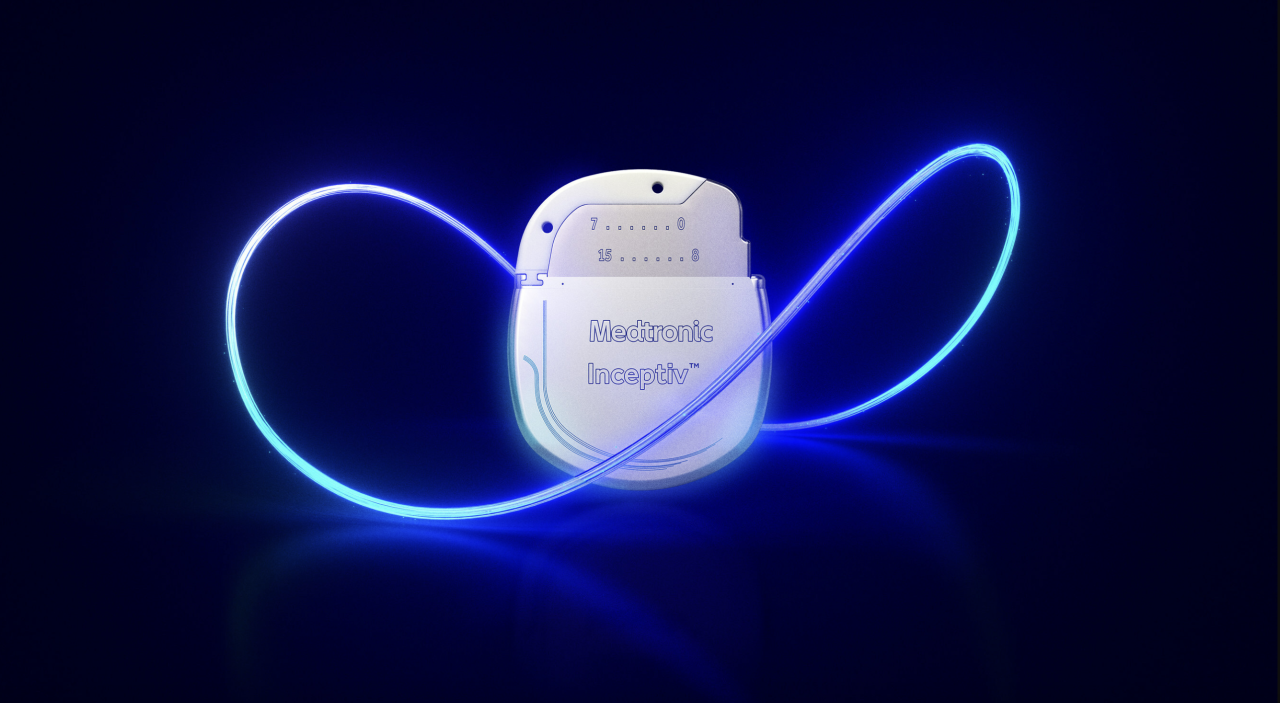Medtronic: An Engineer and the Earthworms That Revolutionized Spinal Cord Stimulation
- 200
Insights from the study of nightcrawlers contributed to a key advancement in the treatment of chronic pain
NORTHAMPTON, MA / ACCESSWIRE / July 31, 2024 / In 2010, engineer David Dinsmoor was looking for a project to occupy a high school intern.
So, he sent the intern to the local bait shop to buy the fattest nightcrawlers they could find to see if they could measure electrical impulses from the worms' nervous systems.
It might be hard to believe now, but that experiment helped set the stage for Dinsmoor's work over the next decade: developing a closed-loop feature for Inceptiv™, the new closed-loop spinal cord stimulator, which received FDA approval in April.
The technology represents a major advancement in the treatment of chronic pain through spinal cord stimulation (SCS) therapy. Medtronic is a leader in the neuromodulation space, after launching the first fully implantable spinal cord stimulator 40 years ago.
But Inceptiv™ builds on that SCS success. It can sense each person's unique biological signals and adjust stimulation accordingly, 50 times per second. And Dinsmoor played a key role in figuring o ut how to "close the loop."
"Early in my career, I wasn't focused on developing a closed-loop technology per se," Dinsmoor said. "For me, it was always about acquiring and measuring these signals from the body. That's the part that I always found the most interesting and still do."
Building circuits, building a career
When Dinsmoor was an undergraduate biomedical engineering student at Case Western Reserve University, he took a class from Professor Thomas Mortimer, one of the early pioneers of spinal cord stimulation. It was Mortimer who helped David get an internship in the Cardiac Rhythm Management business at Medtronic.
"During my internship, I felt that if someone had asked me to build a pacemaker, I couldn't have done it," David said. "I felt like I needed more education to do the work I was interested in doing."
So Dinsmoor went back to school, studying electrical engineering at Stanford University. When he returned to Medtronic a few years later, he put those skills to use building circuits used in several of our devices. But he couldn't envision that work sustaining his interests forever.
Enter the worms.
Less overstimulation, more consistent therapy
Spinal cord stimulators deliver mild electrical impulses to the spinal cord, which disrupt pain signals before they reach the brain. While the technology has undoubtedly improved the lives of thousands of patients through the years, it does have some limitations. As patients go about their daily lives, certain movements and activities may result in overstimulation.
We needed a way to deliver SCS therapy that accounted for patients' movements. The solution: build a system that could detect movements in real-time and adjusts the stimulation within physician programmed levels.
Dinsmoor studied the worms' biological response to stimulation by measuring what is known as "evoked compound action potentials", or ECAPs. Dinsmoor knew that if we could accurately capture and measure ECAPs, it would help us build a closed-loop algorithm for SCS therapy.
However, measuring ECAPS can be difficult because their signals are quite low. In fact, some engineers have equated measuring ECAPS with trying to hear a whisper during a rock concert. Ultimately, Dinsmoor prevailed and built a circuit that could dampen the noise that was interfering with measuring the signals.
Building InceptivTM SCS
Encouraged by former Medtronic CEO Omar Ishrak, Dinsmoor started measuring ECAPs in patients and advanced our efforts to create the closed-loop, rechargeable spinal cord stimulation system.
Not only did Dinsmoor drive our preclinical work, but he also played a major role in designing and building InceptivTM, putting his chip design and circuit-building skills to good use.
InceptivTM is now approved for use in the United States and already helping patients with chronic pain, but for Dinsmoor, the research isn't over. He continues his work with ECAPs and hopes to study how common pain medications impact the signals.
"With InceptivTM, it wasn't just about measuring these signals," Dinsmoor said. "It was about taking that and turning it into a therapeutic benefit."

Inceptiv™
View additional multimedia and more ESG storytelling from Medtronic on 3blmedia.com.
Contact Info:
Spokesperson: Medtronic
Website: https://www.3blmedia.com/profiles/medtronic
Email: [email protected]
SOURCE: Medtronic
View the original press release on accesswire.com



